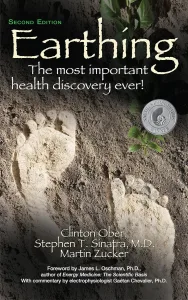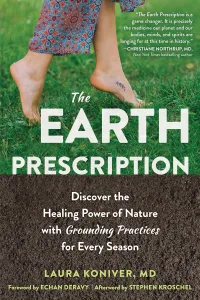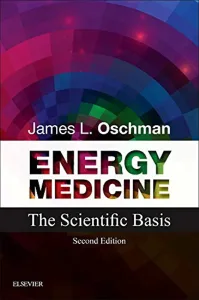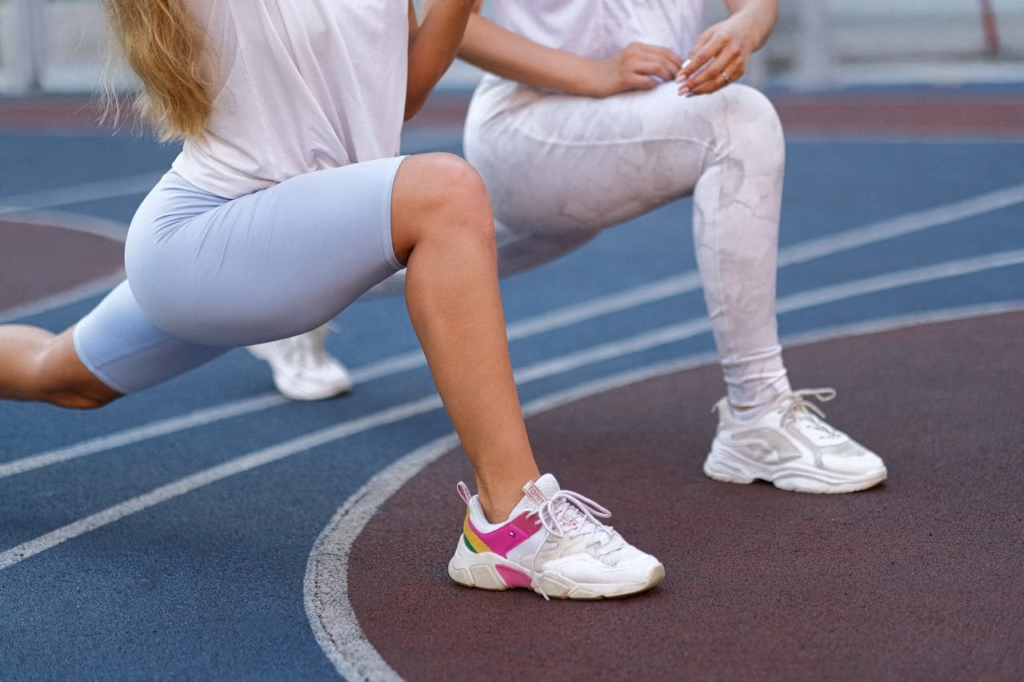I was introduced to the grounding concept while visiting friends in Mexico a few years ago. I never thought walking barefoot on the ground had any health benefits except feeling good while touching grass, sand or water with your feet.
As a sceptic and someone who constantly questions things, I want to research and see if there is any scientific research on the benefits of grounding, what grounding means, and whether we should all be closer to the surface of the ground more often.
What is grounding?
Grounding, or earthing, is touching the Earth directly with bare feet, hands, or other body parts. Grounding is simple: walking on grass, sand, soil or gravel with your bare feet, gardening with your bare hands, or swimming in a lake, sea, or river.
Earth carries a subtle negative charge, which can help balance the positive charges accumulated in our bodies. Grounding puts our bodies in a healing state.
Think of the Earth as a conductor, and anything conductive that touches it becomes a part of its natural circuit (1). Human (or any aminal) bodies are entirely conductive, from our cells to our blood.
In some literature, Grounding is referred to as vitamin G or electronic nutrition.
Electronic Nutrition
Electronic nutrition is a concept of benefiting from the Earth’s natural electrical charge, similar to how one would benefit from vitamins and minerals. The idea is that just as the body needs proper nutrition, it must also maintain its electrical balance to function optimally.
How Electronic Nutrition Works
- Electron Transfer: By coming into contact with the Earth, the body can absorb electrons, which may help balance the body’s electrical charge and reduce oxidative stress.
- Biological Processes: Electrical charges are crucial in many biological processes, including nerve function, muscle contraction, and cellular repair. Grounding helps maintain the electrical environment necessary for these processes.
Conductive and Non-conductive materials
What are conductive materials?- Metals, graphite, water, concrete.
Non-conductive materials?- Plastic, rubber, glass, ceramics, wood, paper, oil.
These days, shoe soles are mostly made of non-conductive rubber or plastic. While it is great to wear shoes to protect ourselves from electrocuting when working around electrical installations or during storms, our rubber soles separate us from the earth’s surface and stop us from Grounding.
How long have we been disconnected from the Earth’s circuit?
There are signs of humans wearing shoes 40 thousand years ago. Most of the first shoes were made from leather, which is not conductive when dry but becomes slightly conductive when wet.
Rubber soles, however, were created after Charles Goodyear invented the vulcanisation process in 1839 and became popular at the end of the 19th century.
Shoe soles are not the only thing separating us from the ground. We drive in rubber-tired cars, walk on elevated streets, and sleep in beds that are sometimes many floors above the ground.
Being connected to the earth is a natural human state that most of us are very far away from. There is a pandemic of chronic inflammation, lack of sleep, and high depression rates. Could lack of grounding, together with unnutritious diets and lack of exercise, be a reason for all of the modern diseases? Are most of us Vitamin G deficient?
Let’s see if any scientific studies show the benefits of grounding.
What are the proven benefits of grounding?
“Studies so far suggest that becoming a part of the earth's global DC circuit enhances our conductive health, which has far reaching implications to all our organ systems that utilize DC energy and conductivity to work, including but not limited to: our central and peripheral nervous system, our musculoskeletal system, and our cardiovascular system.”(1)
I found this information fascinating. I am so excited to see 25 years of medical research backing the benefits of grounding. When I started researching grounding, I was surprised that I could find quite a few studies and review papers about the benefits. However, when I looked into the studies in more detail, most of the studies were funded by grounding product manufacturers, only used a few participants( 8 or 12 ) and also used products like grounding mats or grounding sheets instead of actual grounding on the earth. So all the benefits claimed should be taken with a pinch of salt.
Benefits highlighted in the studies:
- Enhancement of Skin Health and Wound Healing(2)(3)
- Improvement in Sleep(4)
- Improved Immune Function(5)
- Reduction in Inflammation and Pain(5)
- Improved Blood Flow and reduced blood viscosity can enhance cardiovascular health and overall circulation. (6)
How does Grounding work?
The way grounding works is not fully understood, but some proposed explanations include:
- Electrostatic Charge Neutralization: Grounding lets the body absorb free electrons from the Earth and neutralise free radicals, reducing oxidative stress.
- Regulation of Biological Rhythms: Grounding may help synchronise the body’s internal biological clocks with the Earth’s natural rhythms, improving sleep and overall health.

How do you practice grounding?
Grounding is a simple practice. All you need to do is touch the ground’s surface or any other conductive living thing, such as a tree or even an animal standing on the ground, such as grass, soil, or sand.
- Walking barefoot on soil, glass, sand
- Running the soil through your hands whilst gardening
- Swimming in a river, lake or sea
- Touching or hugging a tree or any other plant
- Sitting or Lying down on the ground with bare skin touching it
If you live in a build-up city with a cold climate or do not have asses to the earth’s surface, you can also try different grounding products like sheets, mats (costing anywhere from $20 to thousands) and shoes.
There are a few studies proving that grounding sheets work, but the trials are very small and mainly done by the manufacturers themselves. Can we outsmart Mother Nature and fake that we are closer to the ground using other conductive materials? Maybe…
If you have found any trusted research or experienced the benefits of grounding sheets, mats, shoes, or other products, please let me know. How long and how often should I practice grounding?
How long should you practice grounding?
There are no rules for grounding. Some believe that the electric exchange starts within milliseconds of touching the earth’s surface, but most research states that for the best results, you need to stay grounded for at least 30 minutes at a time and should practise it daily. However, shorter, less regular sessions would still be beneficial.
The short answer is no one knows, so do it as often as you can and as often as you remember.
If you live in a cold climate, it might be more tricky to stand on the ground barefoot, but you can still touch a tree or find a patch of ground every day, even if it’s for a few seconds.
If you would like to deepen your knowledge about grounding, here are a few helpful resources about the benefits of grounding:
Useful resources about Grounding
“Earthing: The Most Important Health Discovery Ever?” by Clinton Ober, Stephen T. Sinatra, and Martin Zucker
“The Earth Prescription: Discover the Healing Power of Nature with Grounding Practices for Every Season” by Laura Koniver MD
“Energy Medicine: The Scientific Basis” by James L. Oschman, PhD
A scientific book that covers not only the benefits of Grounding but everything about energy, from our body to the earth.
This book offers insights that explain how alternative therapies affect the human body.
Here is a short video of Andrew Huberman explaining why it is so difficult to isolate the benefits of Grounding from other benefits of being in nature.
Conclusion: Is grounding worth our time and effort?
There are only a few small studies that highlight the benefits of Grounding, and the research is still in its infancy. It is very difficult to isolate grounding from other benefits of being in nature, like sounds, smells and feelings of natural textures.
Do we all need to buy grounding sheets, pillows, and yoga mats and practise grounding indoors? I don’t think so (unless you do not have any access to nature and would like to try them), at least until more independent, larger studies prove they work. Until then, I really don’t think standing on grass barefoot and being close to nature would harm anyone. We also have a lot of studies proving that spending time in nature has a lot of benefits for our wellbeing. So, let’s take our shoes off and enjoy the warm (or cold) feeling of the ground underneath our feet.
Happy Grounding 🦶
If you like the feeling of being barefoot and would l; like to learn about the benefits of barefoot shoes, read: WHAT ARE BAREFOOT SHOES, AND ARE THEY GOOD FOR YOU?
Just so you know, this post contains affiliate links, and I may earn a small commission if you buy through them at no extra cost to you. For more details, please check out my Affiliate Disclosure.
- Koniver L. (2023). Practical applications of grounding to support health. Biomedical journal, 46(1), 41–47. https://doi.org/10.1016/j.bj.2022.12.001
- Koniver L (2023) Grounding and Skin Repair: The Power of DC Energy. Curr Res Cmpl Alt Med 7: 197. https://doi.org/10.29011/2577-2201.100097
- Kahan, V., Andersen, M., Tomimori, J., & Tufik, S. (2010). Can poor sleep affect skin integrity?. Medical hypotheses, 75 6, 535-7 . https://doi.org/10.1016/j.mehy.2010.07.018.
- M Ghaly, D Teplitz. The biologic effects of grounding the human body during sleep as measured by cortisol levels and subjective reporting of sleep, pain, and stress J Alternative Compl Med, 10 (5) (2004), pp. 767-77 https://doi.org/10.1089/acm.2004.10.767
- Oschman, J., Chevalier, G., & Brown, R. (2015). The effects of grounding (earthing) on inflammation, the immune response, wound healing, and prevention and treatment of chronic inflammatory and autoimmune diseases. Journal of Inflammation Research, 8, 83 – 96. https://doi.org/10.2147/JIR.S69656.
- Chevalier, G., Sinatra, S., Oschman, J., & Delany, R. (2013). Earthing (grounding) the human body reduces blood viscosity-a major factor in cardiovascular disease.. Journal of alternative and complementary medicine, 19 2, 102-10 . https://doi.org/10.1089/acm.2011.0820.
Silvija Meilunaite PN1-NC, is a certified nutrition coach and a writer in the nutrition and self-improvement field with a passion for exploring science-based knowledge focusing on holistic health and plant-based nutrition.
Featured in the Wellness on Time magazine.
- S. Meilunaitehttps://barefootbasil.com/author/silvootegmail-com/
- S. Meilunaitehttps://barefootbasil.com/author/silvootegmail-com/
- S. Meilunaitehttps://barefootbasil.com/author/silvootegmail-com/
- S. Meilunaitehttps://barefootbasil.com/author/silvootegmail-com/








Hey! Would you mindd if I share your blog with my zynga group?
There’s a lot of folks that I think would really enjoy your content.
Please let mme know. Cheers https://zeleniymis.com.ua/
Of course 😍